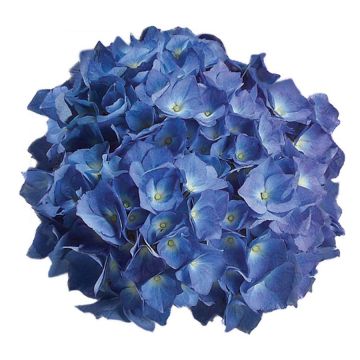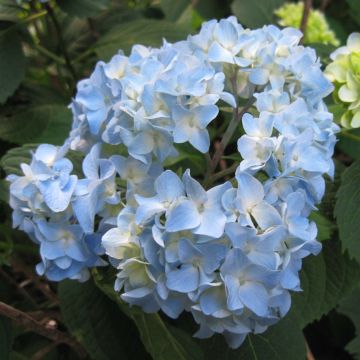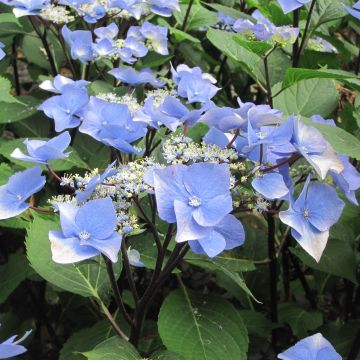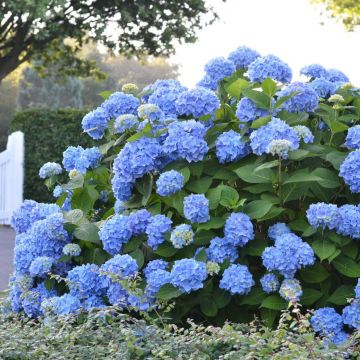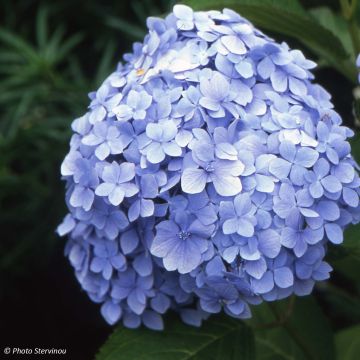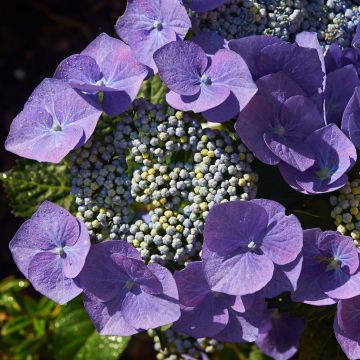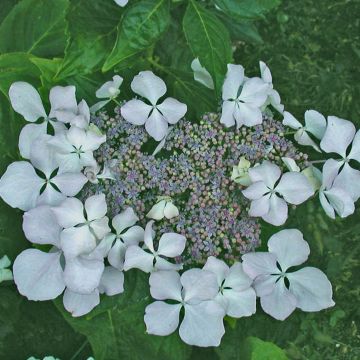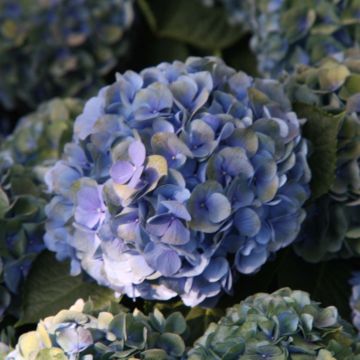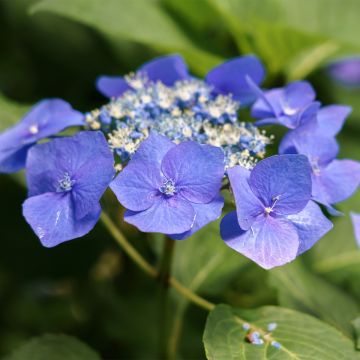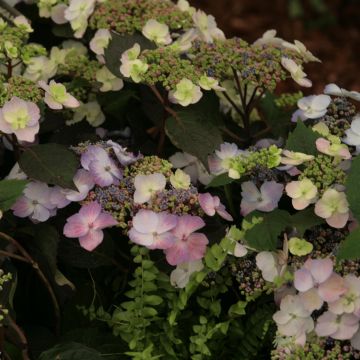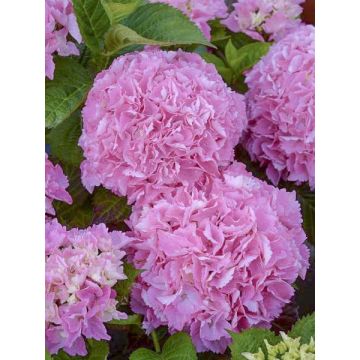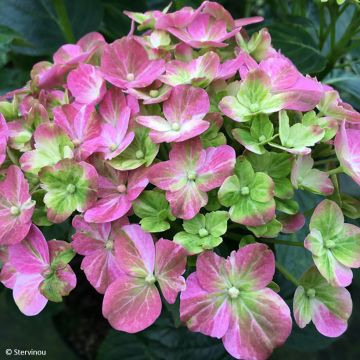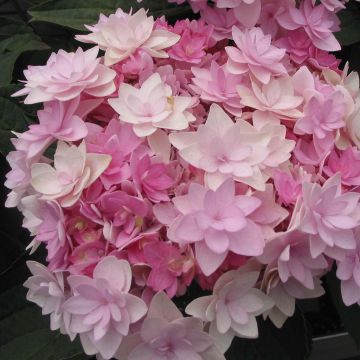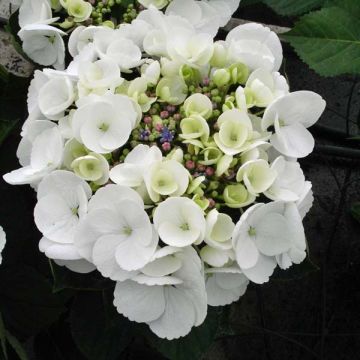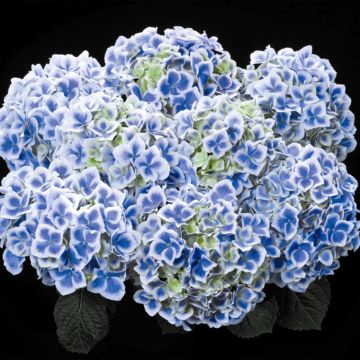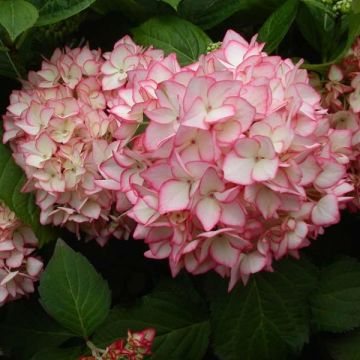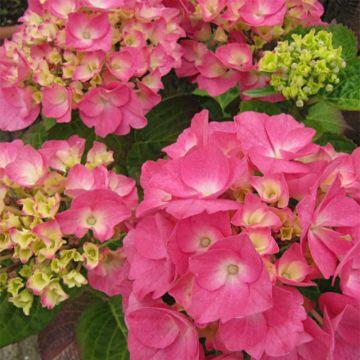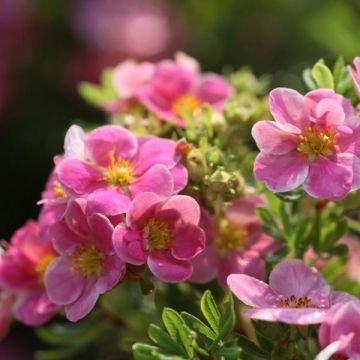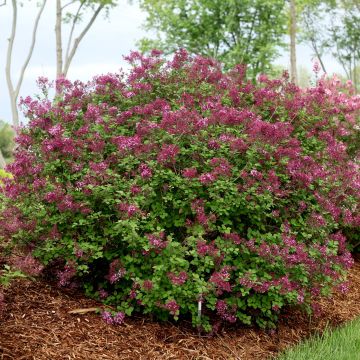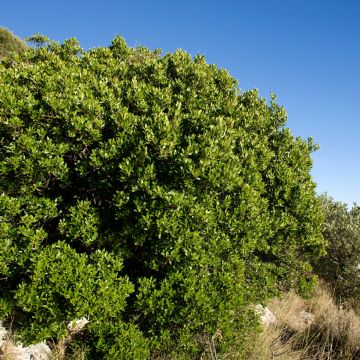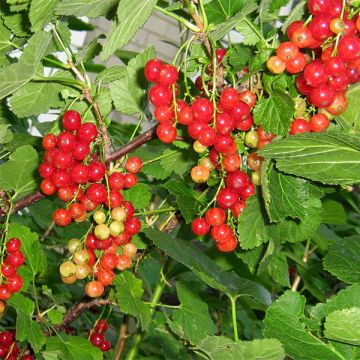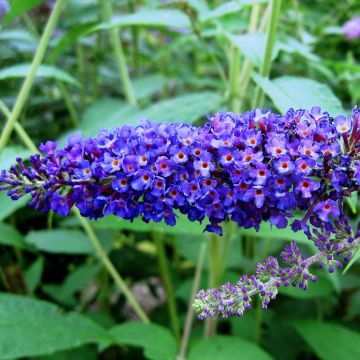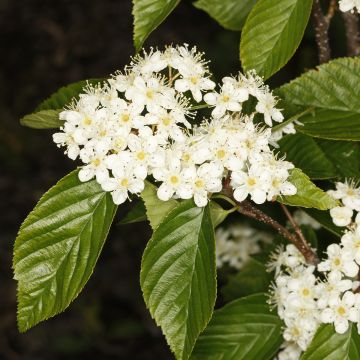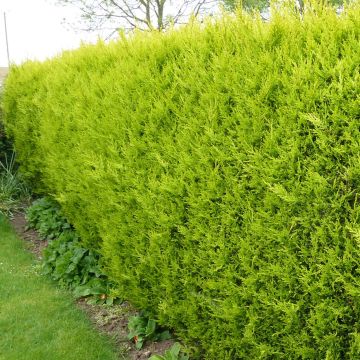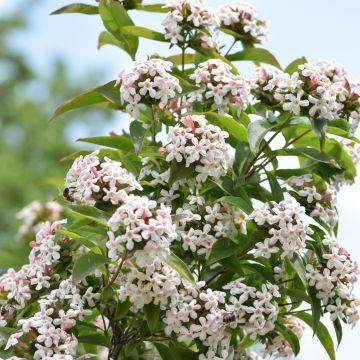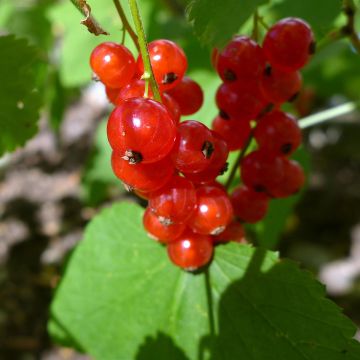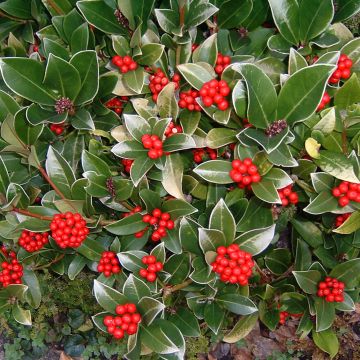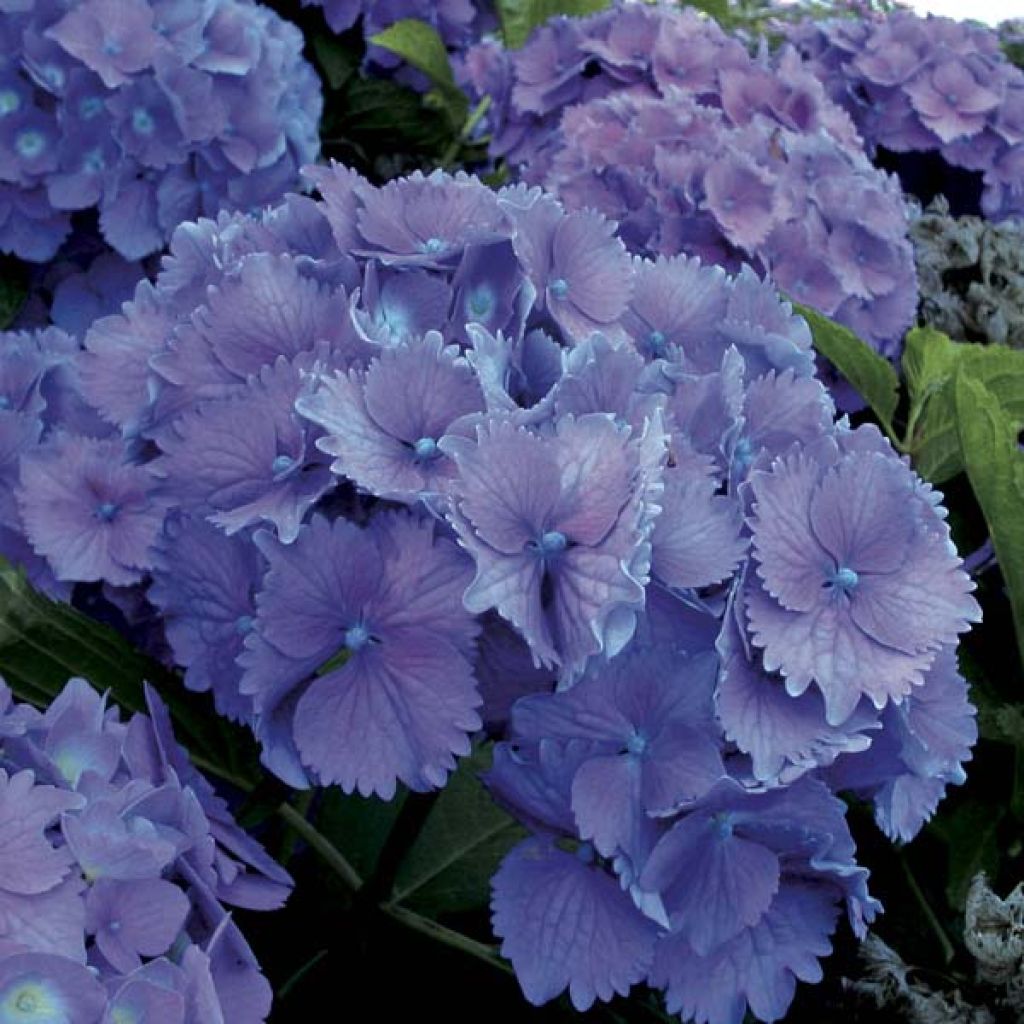

Hydrangea macrophylla Hamburg
Hydrangea macrophylla Hamburg
Hydrangea macrophylla Hambourg
Bigleaf Hydrangea, French Hydrangea
The two young plants purchased nearly a year ago have taken root very well and are growing nicely.
Jeremy, 03/04/2021
Why not try an alternative variety in stock?
View all →This plant carries a 24 months recovery warranty
More information
We guarantee the quality of our plants for a full growing cycle, and will replace at our expense any plant that fails to recover under normal climatic and planting conditions.
From €5.90 for pickup delivery and €6.90 for home delivery
Express home delivery from €8.90.

Does this plant fit my garden?
Set up your Plantfit profile →
Description
Hydrangea macrophylla 'Hamburg', also known as hortensia, is a classic but effective variety, notable for its large rounded inflorescences measuring 20 to 30 cm (7.9 to 11.8 in) in diameter. Blooming from July to October, the flowers are a deep blue in acidic soil and blue with a touch of mauve to carmine-pink in more neutral soil. These flowers emerge on a medium-sized bushy shrub, adorned with dark green and glossy, strongly toothed, foliage. It will find its place in a flower bed, in a hedge, or in a large pot on the terrace, and will thrive in a semi-shaded and cool exposure with slightly acidic and well-drained soil. It is also an ideal variety for dried flowers, which then take on a wine-like, garnet hue.
'Hydrangea macrophylla 'Hamburg' is a variety obtained through the cross-breeding of hardy species belonging to the Hydrangeaceae family, originally from China and Japan. This compact shrub has a bushy and dense habit, reaching an average height of 1.8 m (5 ft 11 in) with a similar spread. From July to October, its numerous sterile flowers form large round inflorescences, with sepal colours ranging from deep blue in acidic soil, to blue with a hint of mauve in slightly less acidic soil, and carmine-pink in neutral soil. Flowering is accompanied by dark green, glossy, and toothed foliage. This Hydrangea is highly hardy, tolerating temperatures as low as -15 °C (5 °F).
The 'Hamburg' Hydrangea is a generous and sturdy plant, excellent for partial shade. Hydrangeas, beloved by gardeners, are well known for brightening up the north side of houses. This variety will thrive in an east-facing position (morning sun), away from the scorching rays of the summer sun and evening sun, in shrub beds and hedges. It will bring charm and dimension to partially shaded areas of the garden, at a slightly hidden entrance or at the corner of a porch. Although these plants dislike limestone, hydrangeas are not strictly heather plants; they appreciate fertile and clayey soils. Pair them with Magellan fuchsias, annual impatiens, or plant spring-flowering bulbs in front of their round silhouette. Enjoy their splendid flowering in the garden or indoors, and create romantic bouquets with their beautiful inflorescences.
Note: The colour of Hydrangea macrophylla flowers varies depending on the pH of the soil. Traditionally blue varieties turn pink in neutral or alkaline soil. To maintain a beautiful blue colour, mix heather soil or ericaceous compost with your garden soil, and apply aluminium sulphate (contained in slate) or alum stone every spring.
Report an error about the product description
Hydrangea macrophylla Hamburg in pictures
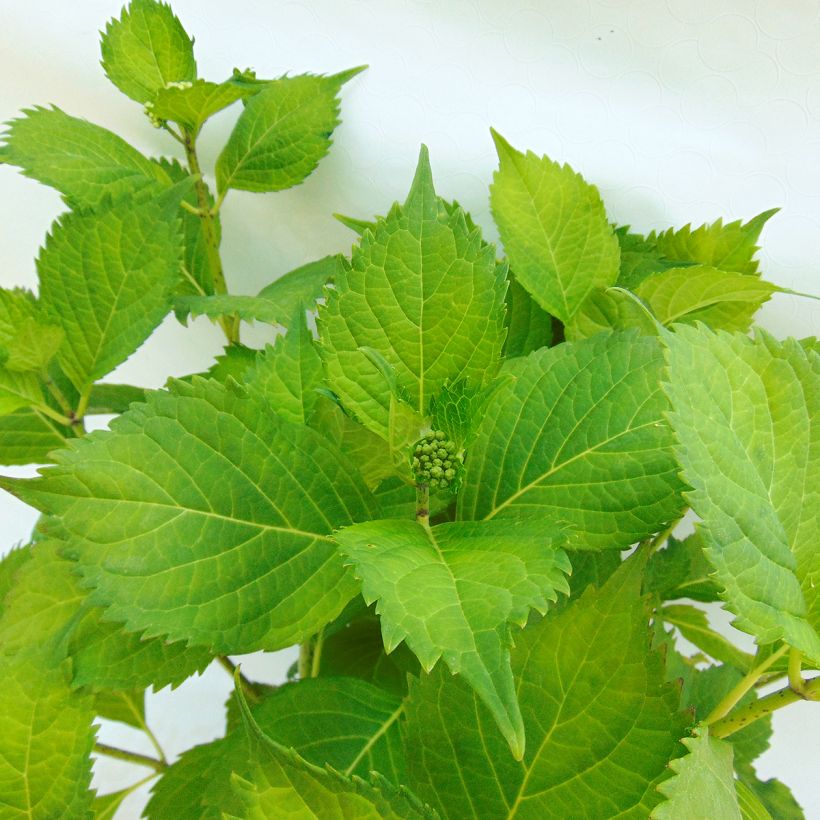

Plant habit
Flowering
Foliage
Botanical data
Hydrangea
macrophylla
Hambourg
Hydrangeaceae
Bigleaf Hydrangea, French Hydrangea
Cultivar or hybrid
Other Hydrangea Macrophylla
Planting and care
Plant Hydrangea macrophylla Hamburg in spring or early autumn, preferably in a slightly shaded position, in the morning sun, for example against an east-facing, or even north-facing, wall. Protect it from cold and drying winds. It does not require acidic soil, but appreciates a deep, moist but well-drained, fairly fertile soil, possibly enriched with a good base fertiliser before planting. If the soil is dry at the base of the wall, place the root ball at least 30-40 cm (11.8-15.7 in) away from the base of the wall and incorporate a quantity of well-rotted compost to better retain moisture in the soil. Very hardy, it can be planted in cold regions. As for pruning, remove faded flowers on the first bud or on the pair of buds directly below. Cut back the oldest stems to the base by a quarter or a third, when the plant is mature, to encourage the formation of young shoots. Carry out this pruning every year during the months of March and April.
Planting period
Intended location
Care
-
, onOrder confirmed
Reply from on Promesse de fleurs
Hedge shrubs
Haven't found what you were looking for?
Hardiness is the lowest winter temperature a plant can endure without suffering serious damage or even dying. However, hardiness is affected by location (a sheltered area, such as a patio), protection (winter cover) and soil type (hardiness is improved by well-drained soil).

Photo Sharing Terms & Conditions
In order to encourage gardeners to interact and share their experiences, Promesse de fleurs offers various media enabling content to be uploaded onto its Site - in particular via the ‘Photo sharing’ module.
The User agrees to refrain from:
- Posting any content that is illegal, prejudicial, insulting, racist, inciteful to hatred, revisionist, contrary to public decency, that infringes on privacy or on the privacy rights of third parties, in particular the publicity rights of persons and goods, intellectual property rights, or the right to privacy.
- Submitting content on behalf of a third party;
- Impersonate the identity of a third party and/or publish any personal information about a third party;
In general, the User undertakes to refrain from any unethical behaviour.
All Content (in particular text, comments, files, images, photos, videos, creative works, etc.), which may be subject to property or intellectual property rights, image or other private rights, shall remain the property of the User, subject to the limited rights granted by the terms of the licence granted by Promesse de fleurs as stated below. Users are at liberty to publish or not to publish such Content on the Site, notably via the ‘Photo Sharing’ facility, and accept that this Content shall be made public and freely accessible, notably on the Internet.
Users further acknowledge, undertake to have ,and guarantee that they hold all necessary rights and permissions to publish such material on the Site, in particular with regard to the legislation in force pertaining to any privacy, property, intellectual property, image, or contractual rights, or rights of any other nature. By publishing such Content on the Site, Users acknowledge accepting full liability as publishers of the Content within the meaning of the law, and grant Promesse de fleurs, free of charge, an inclusive, worldwide licence for the said Content for the entire duration of its publication, including all reproduction, representation, up/downloading, displaying, performing, transmission, and storage rights.
Users also grant permission for their name to be linked to the Content and accept that this link may not always be made available.
By engaging in posting material, Users consent to their Content becoming automatically accessible on the Internet, in particular on other sites and/or blogs and/or web pages of the Promesse de fleurs site, including in particular social pages and the Promesse de fleurs catalogue.
Users may secure the removal of entrusted content free of charge by issuing a simple request via our contact form.
The flowering period indicated on our website applies to countries and regions located in USDA zone 8 (France, the United Kingdom, Ireland, the Netherlands, etc.)
It will vary according to where you live:
- In zones 9 to 10 (Italy, Spain, Greece, etc.), flowering will occur about 2 to 4 weeks earlier.
- In zones 6 to 7 (Germany, Poland, Slovenia, and lower mountainous regions), flowering will be delayed by 2 to 3 weeks.
- In zone 5 (Central Europe, Scandinavia), blooming will be delayed by 3 to 5 weeks.
In temperate climates, pruning of spring-flowering shrubs (forsythia, spireas, etc.) should be done just after flowering.
Pruning of summer-flowering shrubs (Indian Lilac, Perovskia, etc.) can be done in winter or spring.
In cold regions as well as with frost-sensitive plants, avoid pruning too early when severe frosts may still occur.
The planting period indicated on our website applies to countries and regions located in USDA zone 8 (France, United Kingdom, Ireland, Netherlands).
It will vary according to where you live:
- In Mediterranean zones (Marseille, Madrid, Milan, etc.), autumn and winter are the best planting periods.
- In continental zones (Strasbourg, Munich, Vienna, etc.), delay planting by 2 to 3 weeks in spring and bring it forward by 2 to 4 weeks in autumn.
- In mountainous regions (the Alps, Pyrenees, Carpathians, etc.), it is best to plant in late spring (May-June) or late summer (August-September).
The harvesting period indicated on our website applies to countries and regions in USDA zone 8 (France, England, Ireland, the Netherlands).
In colder areas (Scandinavia, Poland, Austria...) fruit and vegetable harvests are likely to be delayed by 3-4 weeks.
In warmer areas (Italy, Spain, Greece, etc.), harvesting will probably take place earlier, depending on weather conditions.
The sowing periods indicated on our website apply to countries and regions within USDA Zone 8 (France, UK, Ireland, Netherlands).
In colder areas (Scandinavia, Poland, Austria...), delay any outdoor sowing by 3-4 weeks, or sow under glass.
In warmer climes (Italy, Spain, Greece, etc.), bring outdoor sowing forward by a few weeks.

































